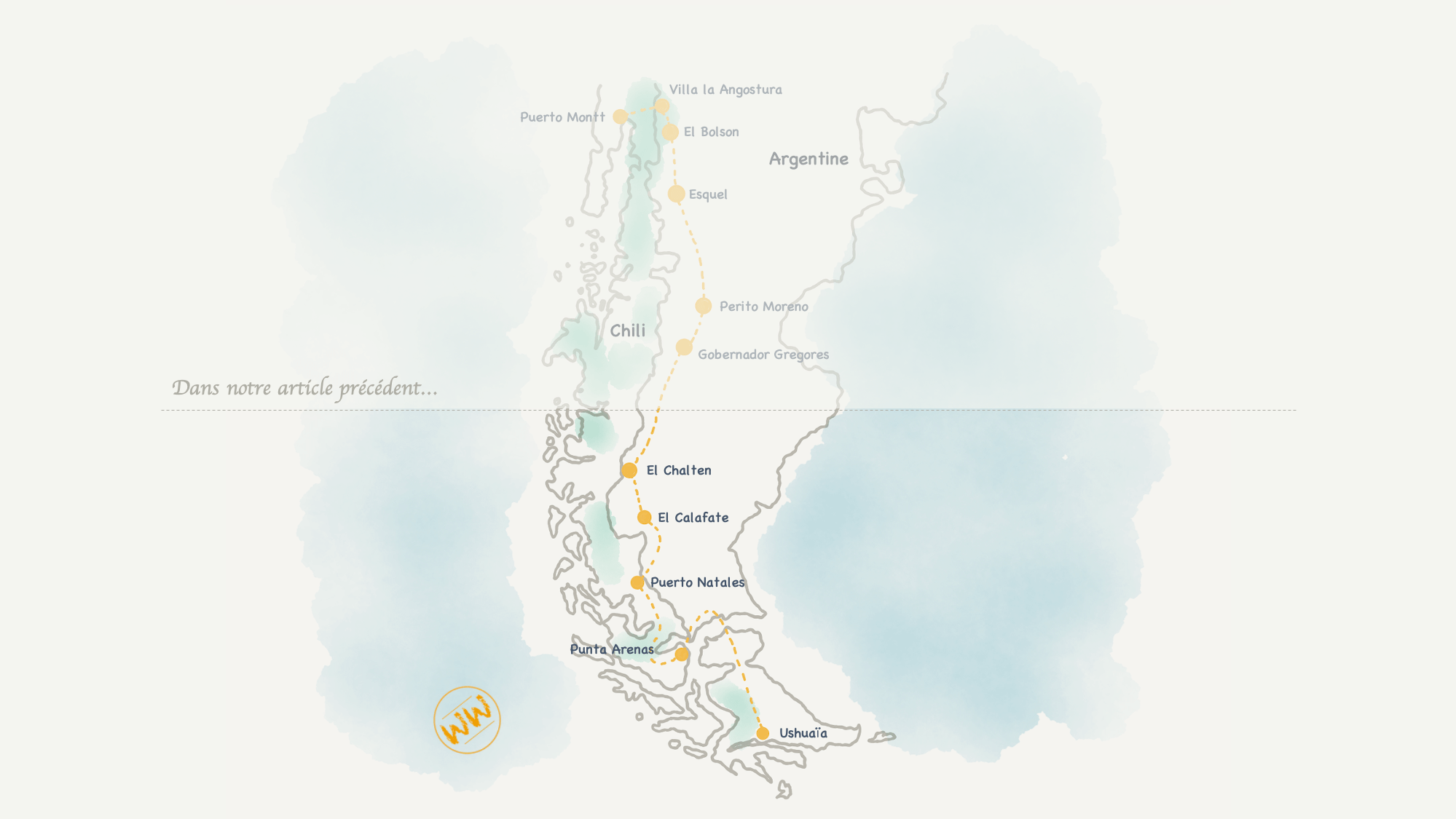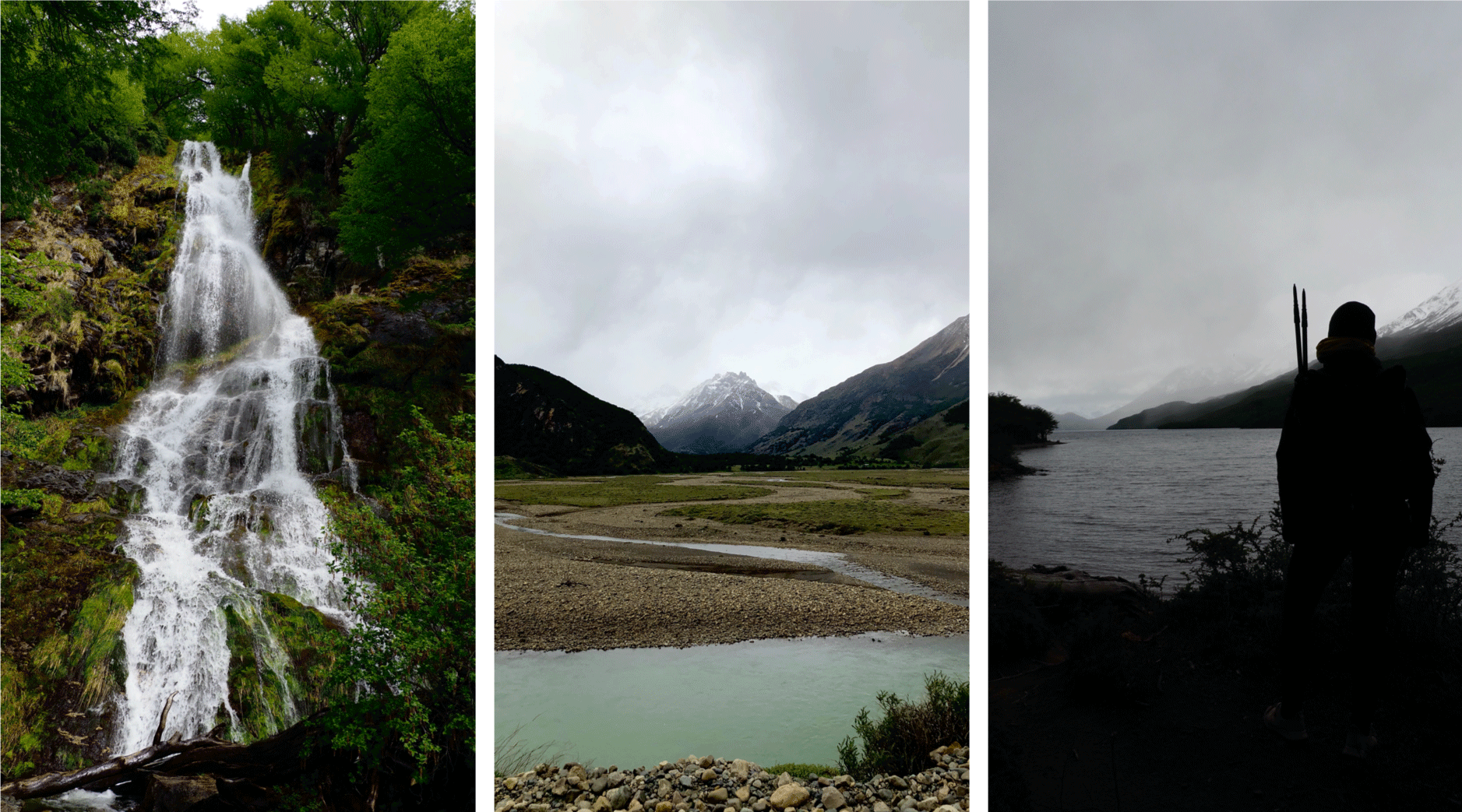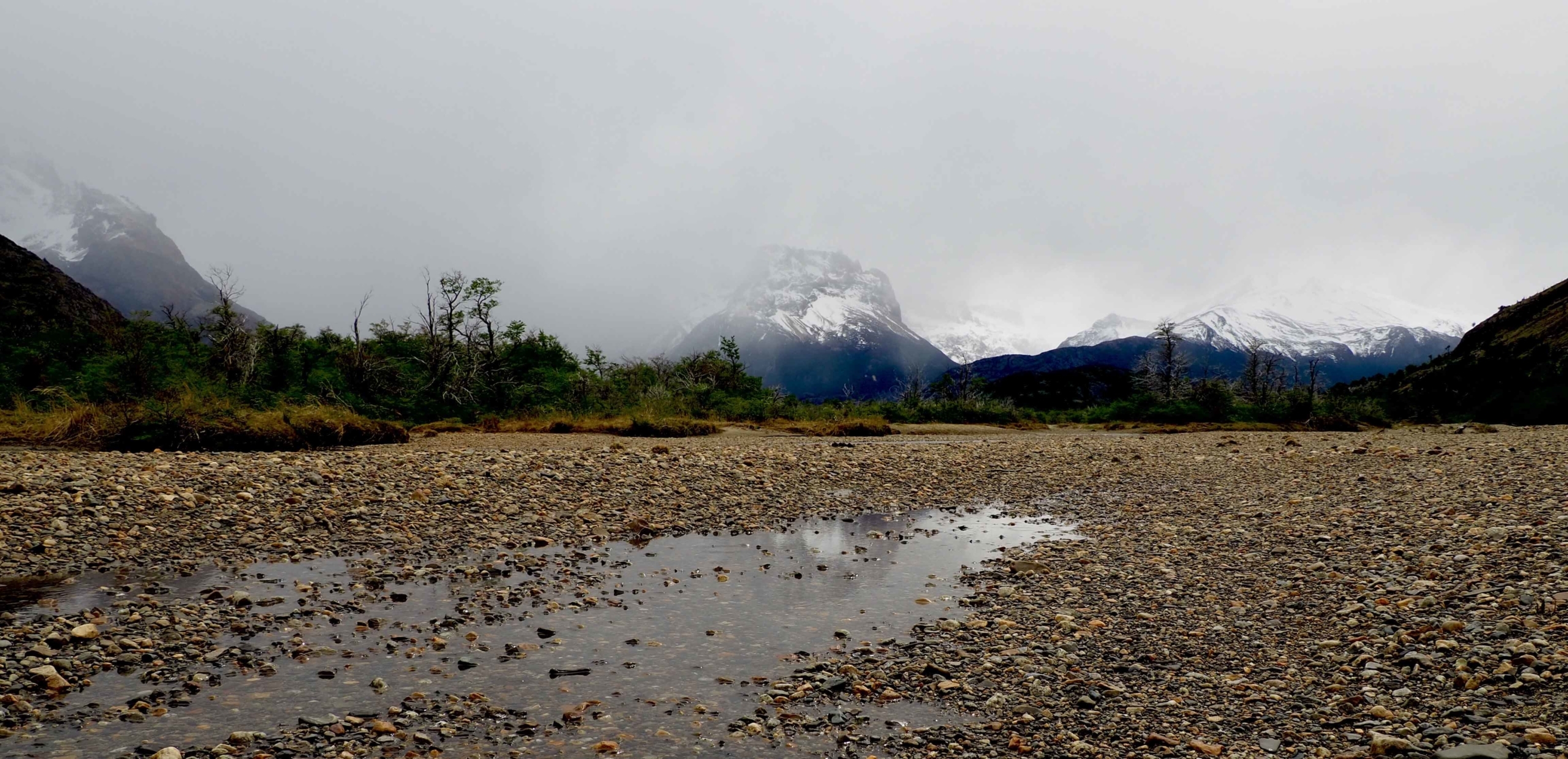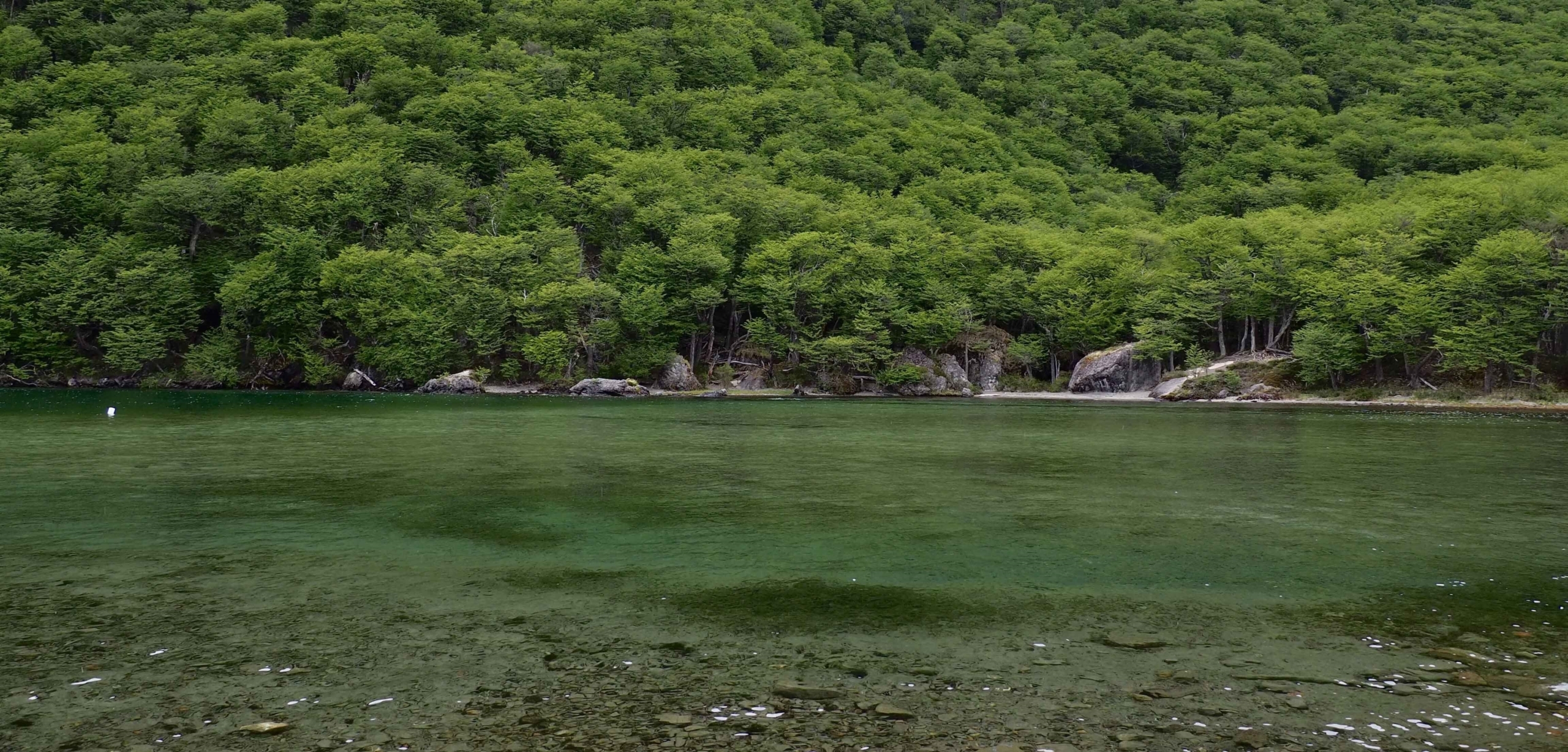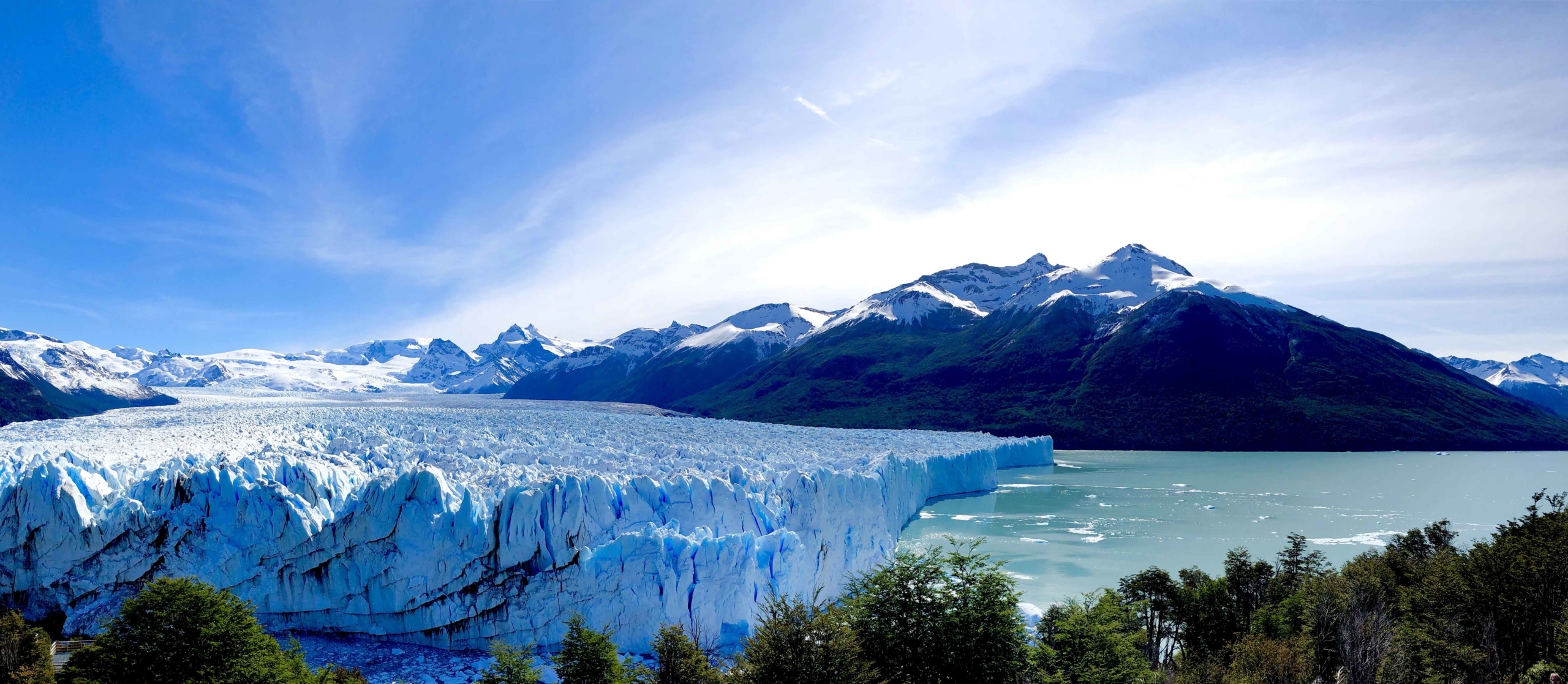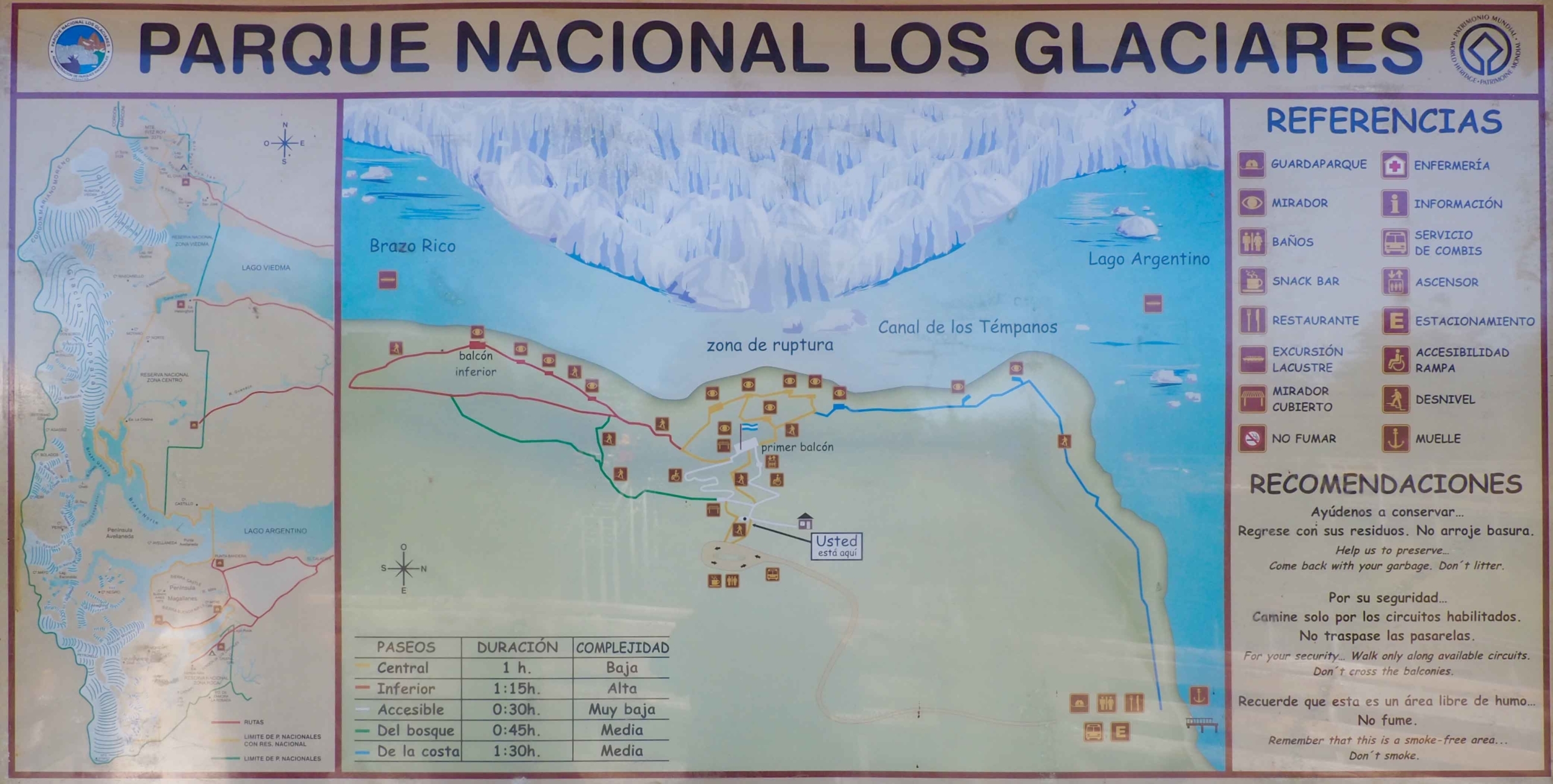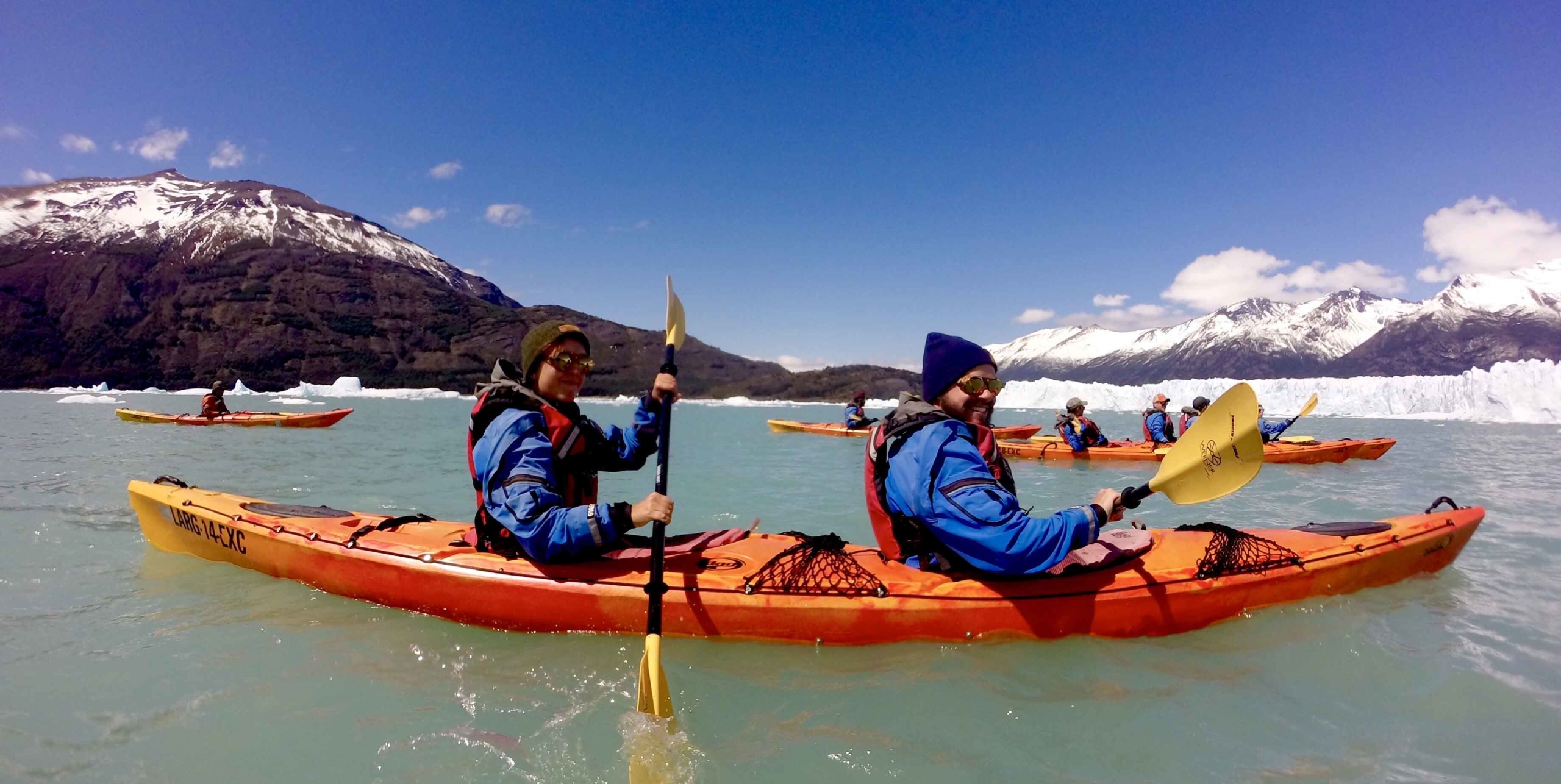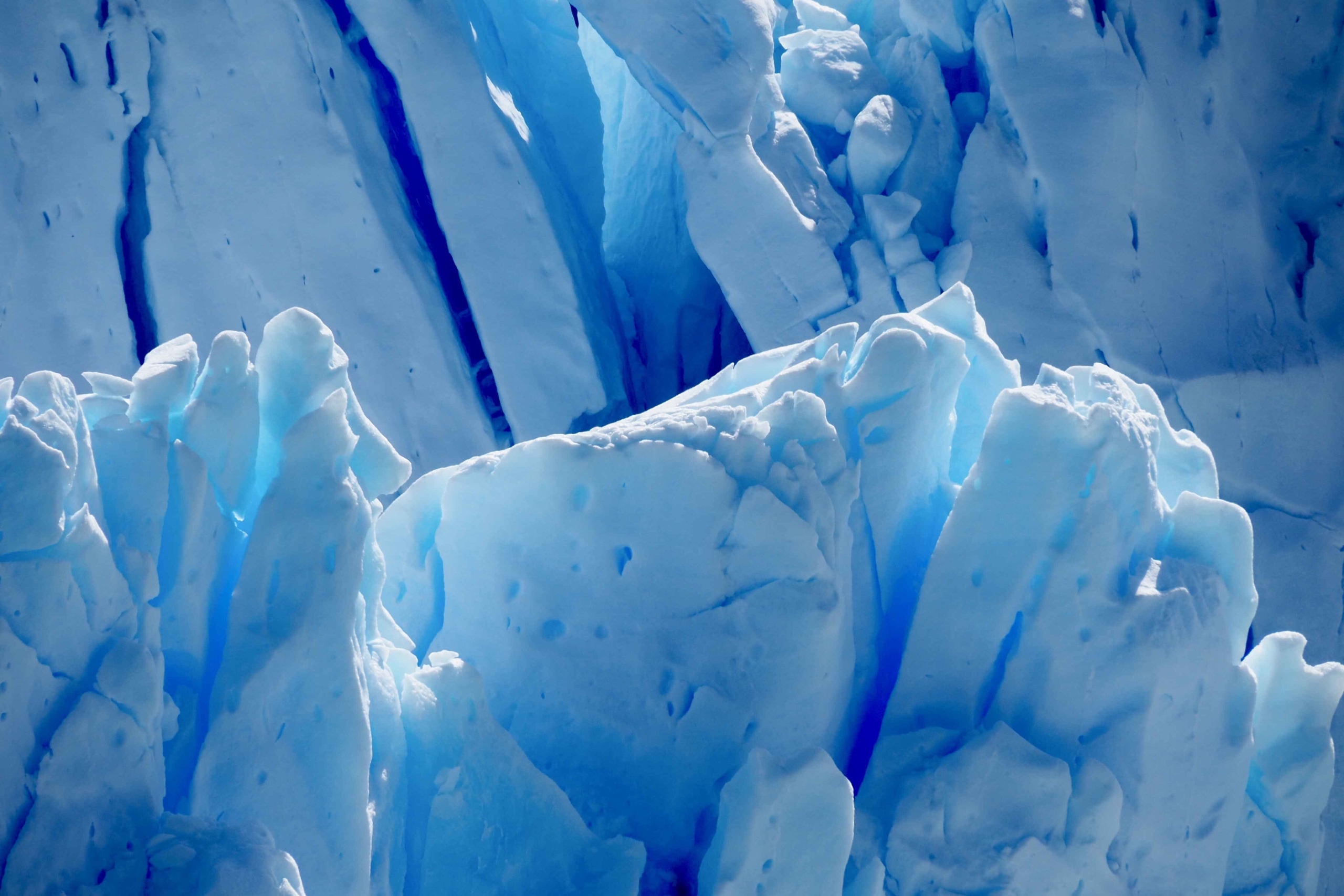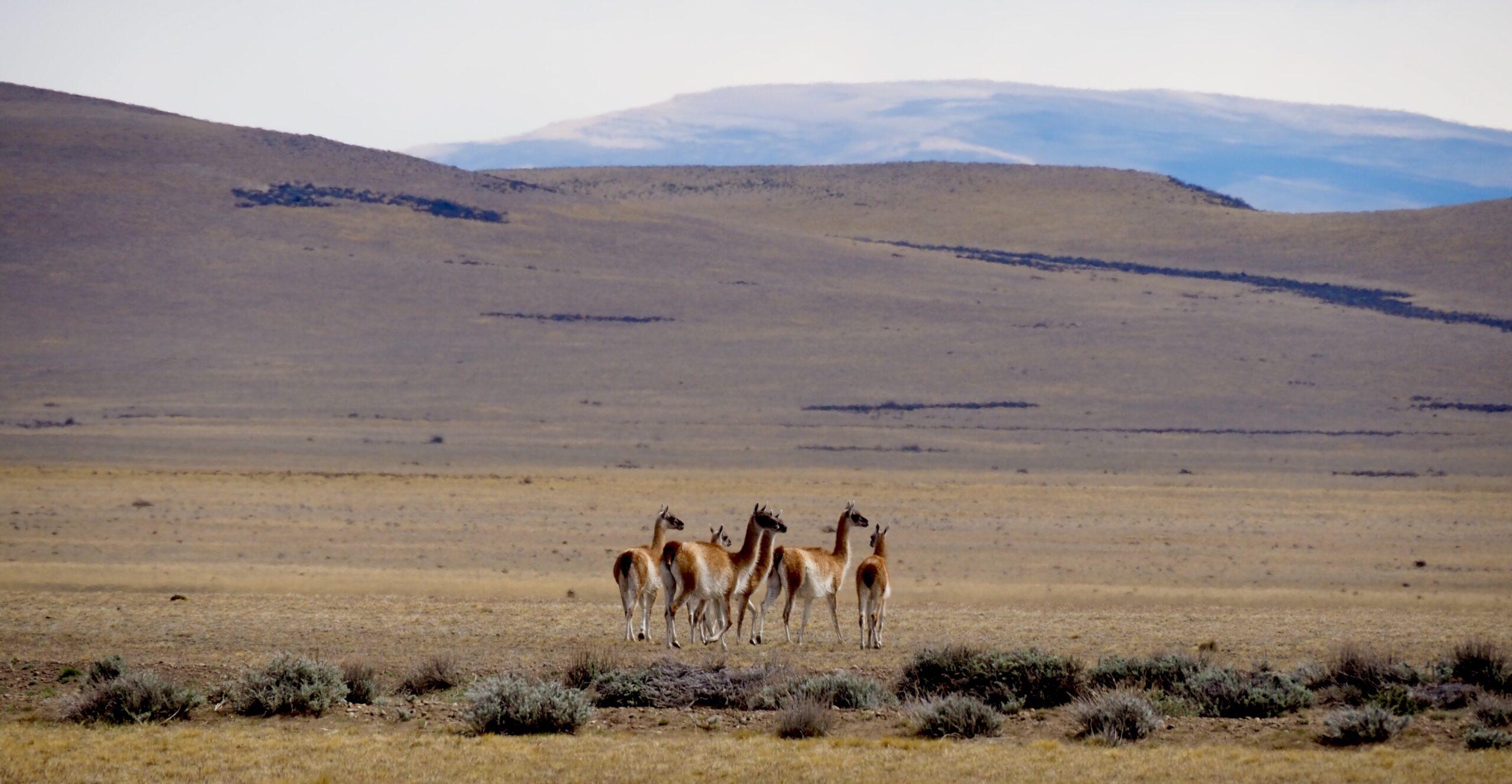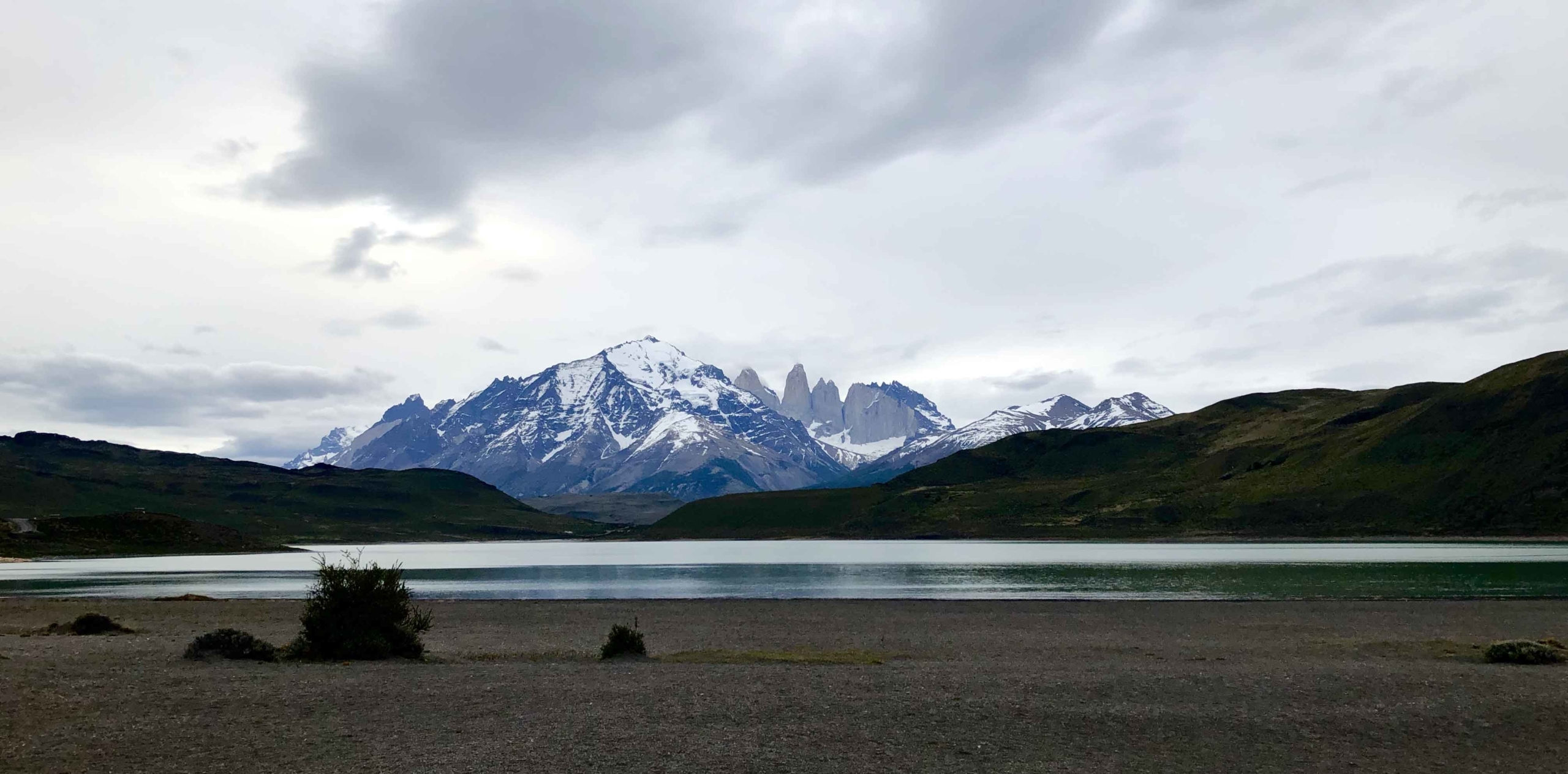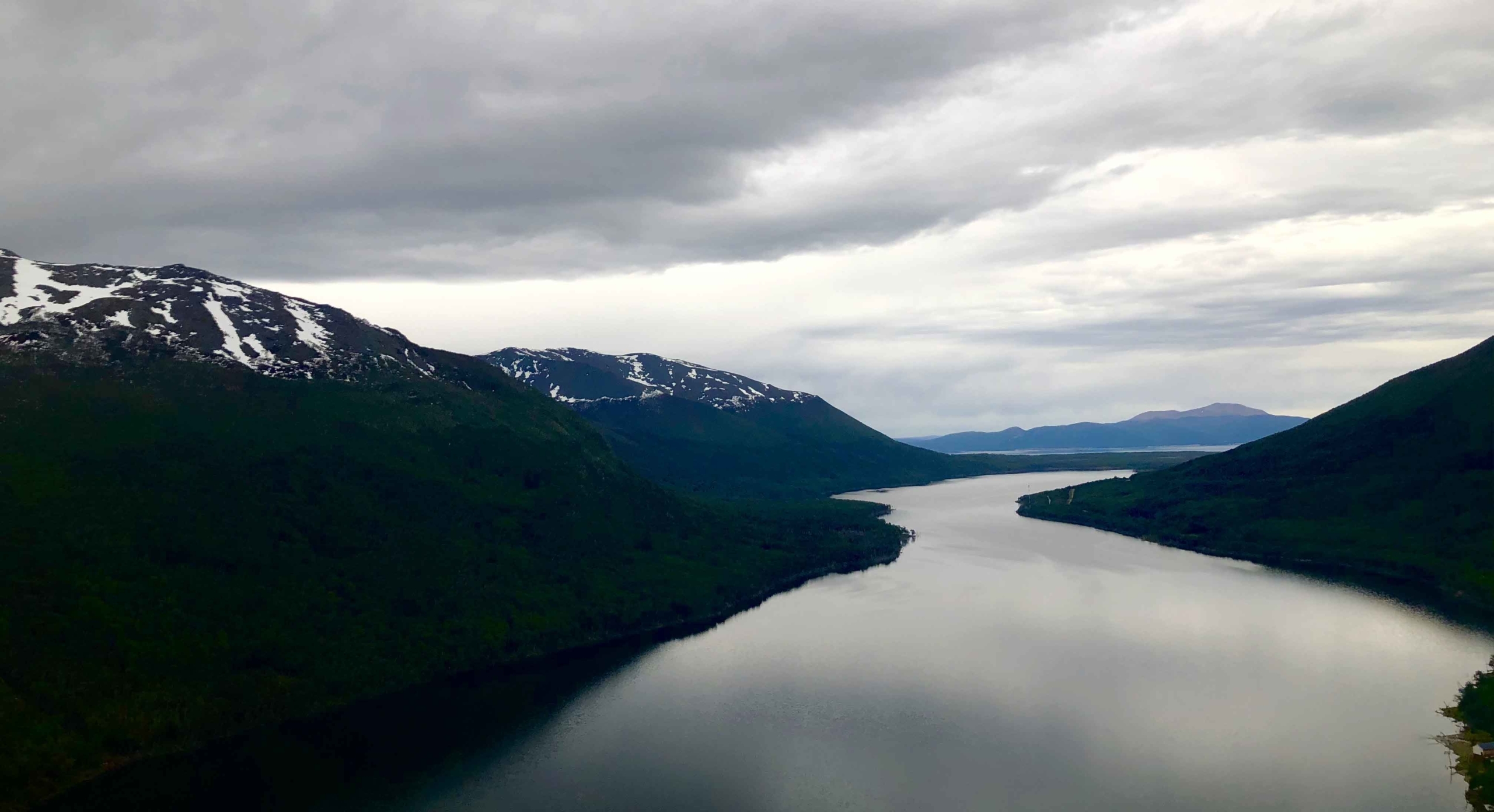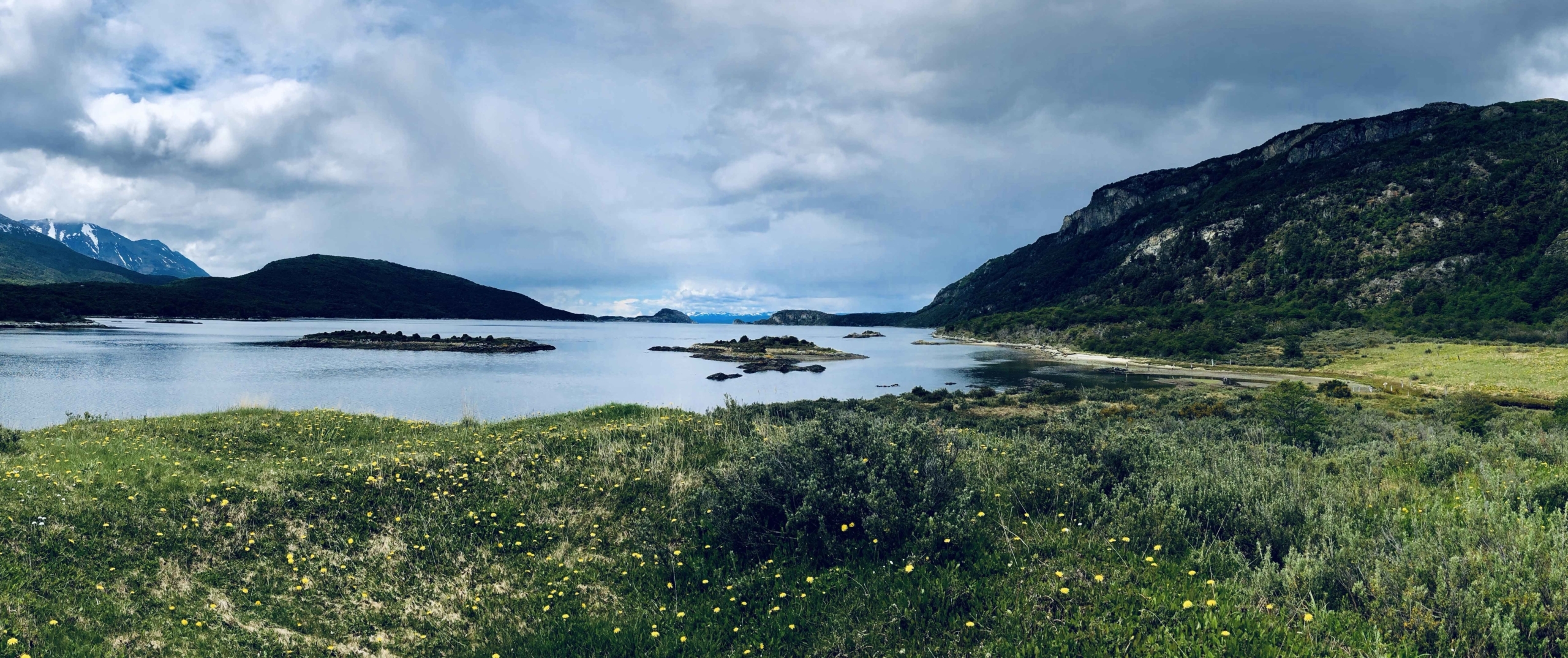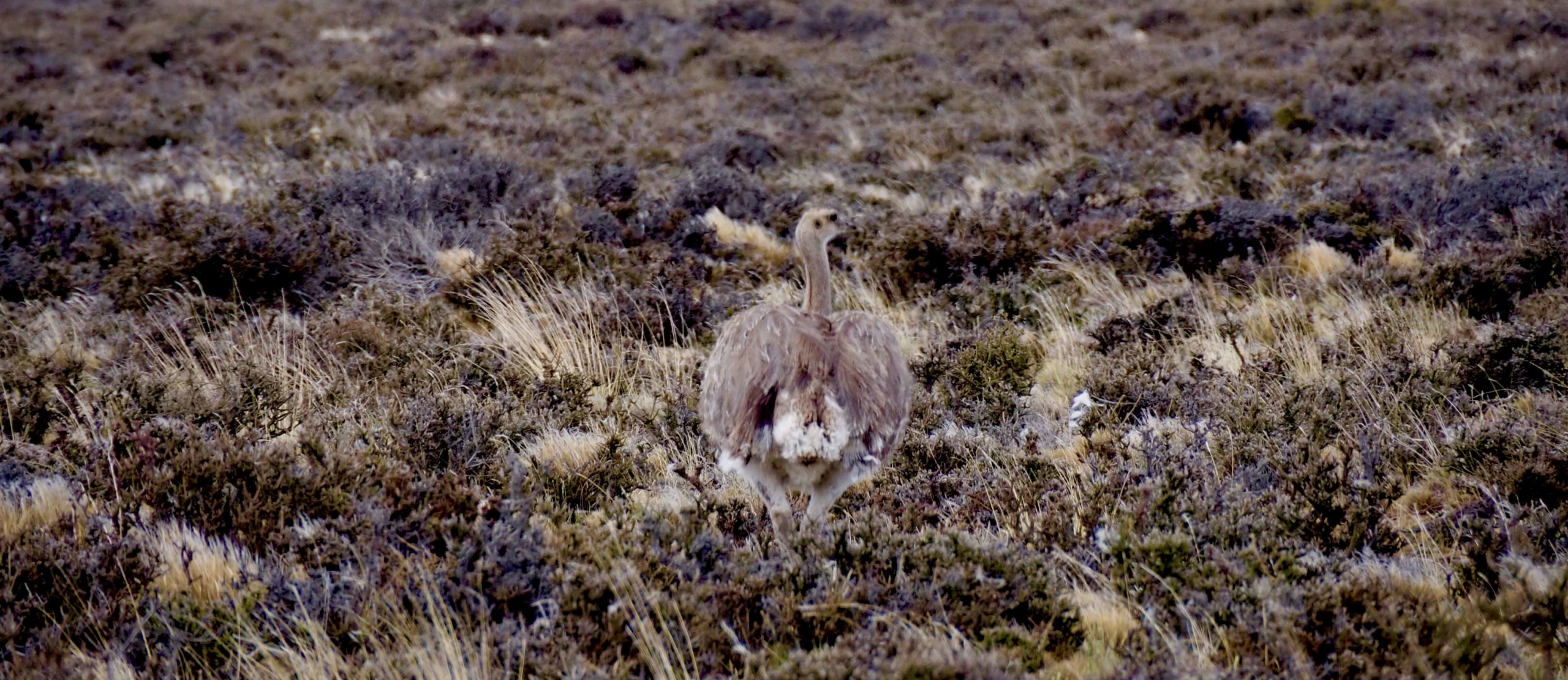Temps de lecture : 15 minutes
Nous poursuivons notre périple patagonien (voir notre article précédent) en pénétrant dans la région des glaciers. En quelques kilomètres, les paysages changent du tout au tout ! Les plaines désertiques laissent place aux forêts, le soleil ardent aux averses de neige, les ruisseaux asséchés à d’immenses lacs aux couleurs changeantes…
La Ruta 40, droite et poussiéreuse sur nos dernières étapes, se mue en virages goudronnés alors que les sommets encore noyés dans les vapeurs grandissent à l’horizon. Au détour de l’un de ces virages, on aperçoit entre deux averses le village d’El Chalten, paradis des randonneurs et porte d’entrée du parc national des glaciers. Nous y passerons deux jours avant de poursuivre – toujours en voiture – notre route vers la Terre de Feu…
Étape 7 : El Chalten et le parc national des glaciers (2 jours, 2 nuits)
Depuis Gobernador Gregores : 5h45 ; 300 kilomètres
Route partiellement goudronnée ; portions de pistes carrossables
Si cela vous a échappé dans notre article précédent, nous avons adoré en bloc notre séjour en Patagonie ! Et El Chalten en a été l’une des plus belles étapes… Et l’une des plus frustrantes !
On s’explique : El Chalten, c’est le point de rencontre des randonneurs qui partent à l’assaut du mont Fitz Roy, un piton rocheux majestueux planté en plein cœur du parc national des glaciers. Avec son ambiance à la fois paisible et conviviale de station de ski à l’heure estivale, on a adoré cette petite ville… Et ses alentours ! Le parc est un joyau naturel peuplé de forêts, de lacs et de rivières sur fond de masses rocheuses grises et noires : le genre d’endroit qui vous donne envie de partir en explorateur pour vous noyer dans cet écrin de verdure… L’une de nos étapes préférées donc !
Seulement voilà : ici, la randonnée c’est de la randonnée en pleine nature. En d’autres termes, difficile de s’aventurer en fauteuil dans les sentiers qui couvrent les montagnes et qui sont trop étroits, trop pentus, trop rocheux… Bref, très impraticables, même avec la meilleure volonté du monde !
Nous profitons donc des magnifiques paysages du parc en parcourant en voiture la piste qui le traverse de part en part (1/2 journée aller-retour pour faire le trajet avec arrêts aux points de vue), avec une envie irrépressible d’exploration sauvage qui reste inassouvie malgré nos nombreuses tentatives…
Ne vous y méprenez pas : si c’était à refaire, nous y retournerions sans hésiter ! Si nos mouvements sont limités (nous avons quand même pu emprunter un chemin accessible qui mène à la cascade Chorrillo del Salto à l’entrée du parc), nous profitons malgré tout des paysages éblouissants qu’offre le parc et ne louperions ça pour rien au monde… Une expérience en pleine nature moins immersive que prévu mais pas moins inoubliable !
Infos pratiques
Où dormir ?
Qui dit rendez-vous des randonneurs dit ville touristique… Et prix des hébergements en conséquence ! El Chalten propose de nombreux logements de toutes catégories mais à des prix un peu plus élevés qu’ailleurs en Argentine…
Pour ce qui est des logements accessibles en revanche, c’est plus compliqué ! Nous n’en trouvons d’ailleurs aucun… Comme à Esquel, nous choisissons donc un hôtel avec une rampe d’accès et un ascenseur mais dont l’usage de la salle de bains nécessite des trésors d’inventivité (absence de barres d’appui et porte de la douche trop étroite).
L’hôtel Chalten Suites est néanmoins très agréable et offre des chambres confortables, un petit-déjeuner de qualité et une vue imprenable sur le mont Fitz Roy lorsque le ciel est dégagé (190€ la nuit pour deux, petit-déjeuner inclus)… On le recommande vivement !
Où manger ?
Quand on vous parlait d’ambiance de station de ski… Elles y sont pour quelque chose ! On fait deux merveilleuses découvertes culinaires à El Chalten :
- La Tapera (trois marches à l’entrée, des clients qui attendent nous aident à porter Pierre ; toilettes à l’étage) : une cuisine traditionnelle de Patagonie, des plats généreux au coin d’un immense feu de bois (attention, vos vêtements sentiront pendant plusieurs jours après… choisissez-les bien !)… Et un accueil chaleureux et souriant ! On a adoré ! A noter : contrairement à ce qui est indiqué en vitrine, l’établissement ne prend pas les cartes bancaires : il vous faudra régler en liquide. En cas de problème, ils font crédit : vous pourrez terminer de payer votre addition le lendemain le temps d’aller retirer au seul distributeur de la ville…
- La Vineria (une petite marche à l’entrée, toilettes non accessibles) : un restaurant animé où l’on goûte l’un des nombreux vins argentins de la carte en partageant une planche de charcuteries et fromages du coin… Une super adresse !
Dans les deux cas, pas de réservation possible : n’hésitez pas à arriver tôt ou attendez patiemment qu’une table se libère, dans le hall couvert du premier ou au bar du second !
Moyens de paiement
Ici, de nombreux restaurants et activités (excursions en bateau sur les lacs du parc par exemple) se payent en liquide, faute de connexion correcte et donc de terminaux de carte bancaire… Il faut donc anticiper ! D’autant que la ville ne dispose que d’un unique distributeur (derrière la gare routière à l’entrée de la ville), alimenté une seule fois par semaine (le jeudi dans la journée, horaires variables).
Prévoyez d’arriver avec du liquide ou d’en retirer le plus vite possible une fois le distributeur rempli : les réserves s’amenuisent généralement vite…
Carburant
La seule station service à des kilomètres à la ronde se trouve à l’entrée d’El Chalten (quelques centaines de mètres avant le pont qui permet d’atteindre la ville). Pour plus de sérénité, prévoyez d’avoir toujours le plein : cela vous évitera les surprises en cas de pénurie ! A noter que la station ne prend pas la carte : ici aussi, il vous faudra payer cash…
Étape 8 : El Calafate, à la découverte du Perito Moreno (2 jours, 3 nuits)
Depuis El Chalten : 3h45 ; 220 kilomètres
Route goudronnée
Nous quittons El Chalten en direction d’une étape que nous attendions avec impatience ! El Calafate sera notre point de départ pour explorer l’un des plus grands glaciers du monde : le Perito Moreno ! L’un des plus beaux spectacles que nous ayons vus de notre vie, sans aucun doute…
Situé à 1 heure de route environ d’El Calafate (75 kilomètres), ce glacier est l’un des trois seuls d’Amérique du Sud qui ne recule pas à ce jour… En réalité il progresse même de 2 mètres par jour ! Mais les morceaux de falaise qui se détachent avec fracas pour plonger quotidiennement dans le Lago Argentino compensent cette avancée, en faisant un glacier stable…
Si El Calafate est une ville plutôt sympa avec sa rue principale bordée de boutiques et de bars / restaurants à l’ambiance chaleureuse, elle n’a pas grand intérêt en soi et, comme El Chalten, voit ses prix s’envoler du fait de la forte activité touristique. On y apprécie une promenade le long de la lagune au coucher du soleil, mais elle est surtout une ville dortoir pour les personnes qui souhaitent explorer la région et ses glaciers (l’aéroport à proximité en fait un point de passage simple et rapidement accessible depuis les grandes villes d’Argentine).
Infos pratiques
Où dormir ?
Toutes les gammes sont disponibles à El Calafate et l’offre de logements ne manque pas ! Mais encore une fois, pour les hébergements accessibles… Difficile de trouver quelque chose !
Nous nous installons à l’hôtel Aikendor, légèrement excentré, qu’on apprécie pour sa vue imprenable sur la baie. Pas parfait en termes d’accessibilité (une petite marche dans la douche), mais presque (rampe à l’entrée, espaces de circulation larges dans la chambre et la salle de bains, barres d’appui…) !
Un petit conseil : si vous avez un véhicule, n’hésitez pas à vous éloigner un peu du centre pour chercher votre hébergement ! Vous obtiendrez de meilleurs tarifs…
Où manger ?
Les rues d’El Calafate ne manquent pas de choix ! Voici une petite sélection de nos coups de cœur :
- La Zaina : pour son ambiance chalet dans son jus et ses plats typiques de la région,
- Don Pichon : pour sa vue incroyable sur la baie au coucher du soleil et ses viandes grillées (si vous êtes quatre, n’hésitez pas à commander pour deux…)
- Mako Premium Bar : pour sa terrasse ensoleillée à l’heure du déjeuner,
- La Zorra : parce que déguster une bonne bière, c’est déjà bien… Mais que quand c’est dans un pub à l’ambiance chaleureuse et 100% accessible c’est encore mieux !
On recommande
1. Admirer le Perito Moreno sous toutes ses coutures (1 à 2 jours)
Campé sur le Lago Argentino, le Perito Moreno peut s’admirer de différentes manières. Quelle que soit l’option (ou les options) que vous choisissez, il vous faudra vous acquitter au préalable des droits d’entrée du parc de 800 ARS (gratuit PMR et accompagnant sur présentation de la carte d’invalidité) payables à l’entrée (en haute saison, prévoir un temps d’attente à l’entrée du parc).
a. Arpenter les passerelles à pied (1 à 3 heures)
Moyen le plus simple et le moins cher de profiter du Perito Moreno, les passerelles en métal qui couvrent la montagne voisine sont idéales pour une promenade qui vous en mettra plein les yeux ! En fonction du temps que vous passez à profiter de la vue, la balade peut facilement durer 4 heures (voir plan en dessous). Le chemin peut se faire dans un sens ou dans l’autre, depuis le restaurant Nativos de la Patagonia ou depuis le parking supérieur (accessible par navettes uniquement, sauf Personnes à Mobilité Réduite ; départs des navettes depuis le parking inférieur, près du restaurant).
En fauteuil : les deux étages les plus élevés des passerelles sont accessibles depuis le parking supérieur (vous pourrez y accéder en voiture en présentant points votre carte d’invalidité aux agents présents sur place). Des rampes permettent de descendre aux premierse vue, ainsi qu’un ascenseur. Le reste du trajet contient des marches et n’est donc pas accessible (les escaliers sont néanmoins équipés de rampes pour se tenir si nécessaire).
b. Faire un tour en bateau sur le Lago Argentino
Des catamarans partent régulièrement et vous permettent d’apprécier la vue sur le glacier depuis le bas de la falaise (1000 ARS pour une heure) ! Pour des raisons de sécurité, les bateaux n’approchent pas à moins de 400 mètres, mais cela est largement suffisant pour admirer depuis le pont cet immense mur blanc de 70 mètres de haut et les blocs qui s’en détachent pour s’immerger dans le lac dans un bruit de tonnerre… Il est possible de réserver sur place, mais mieux vaut anticiper en haute saison sur le site de Hielo&Aventura (insérer le lien : https://hieloyaventura.com).
c. Pagayer en kayak au pied de la falaise
Une expérience inoubliable… Et on pèse nos mots ! C’est l’option que l’on a choisie : 2 heures à pagayer dans une eau à 3 degrés du bleu le plus pur qu’on ait jamais vu… Un énorme bonheur !
Cette option vous coûtera 8 000 ARS par personne (environ 140€ en achetant dans leur boutique d’El Calafate, les réservations en ligne coûtent un peu plus cher) avec MilOutdoor, incluant le matériel (kayak pour deux, pagaies et combinaison spéciale pour eaux froides) et les guides, qui vous emmènent slalomer entre les icebergs en vous racontant l’histoire du glacier… On recommande vivement !
En fauteuil
Il faut avoir l’usage complet de ses bras pour cette activité et un bon équilibre (les dossiers des kayaks mesurent environ 40 centimètres de haut). Les guides peuvent aider à accéder à la plage (chemin en terre puis sable) et à vous installer / sortir de votre le kayak. Idéalement, mieux vaut privilégier les saisons plus calmes (donc pas le plein milieu de l’été) car un guide est entièrement dédié à la sécurité de votre kayak : il pagaiera a côté de vous tout au long de l’excursion. Votre fauteuil est gardé en sécurité dans l’abri à bateaux à proximité de la plage. Pensez à les contacter en avance (leur numéro WhatsApp est disponible sur le site et ils sont réactifs) pour confirmer que les conditions sont réunies pour vous permettre de vivre sereinement cette aventure !
d. Parcourir le glacier à pied
Si vous aimez crapahuter, cette solution est faite pour vous ! Il est possible d’explorer le glacier par le haut avec des excursions d’une journée, il parait que l’expérience est incroyable ! Pas d’accès possible aux Personnes à Mobilité Réduite en revanche…
N’hésitez pas à cumuler plusieurs de ces solutions ! Le glacier mérite d’être vu sous différents angles et on peut largement en profiter en une journée si on est pressé… Ou en deux si on souhaite y revenir !
Bon à savoir quand on est en fauteuil : le restaurant Nativos de la Patagonia est accessible par l’entrée du personnel (à gauche quand on fait face au restaurant, rampe d’accès) et dispose de WC aménagés.
2. Se cultiver sur les glaciers et l’impact du réchauffement climatique (1/2 journée)
Entrée : 600 ARS par personne, gratuit PMR
Pour nous, le musée de glaciers (Glaciarium) est une étape obligée du passage à El Calafate (et pourtant, vous nous connaissez, on n’est pas très musées) !
Ouvert tous les jours de 11h à 19h (les horaires varient en fonction des années / saisons apparemment), ce musée est particulièrement instructif sur le Perito Moreno et l’histoire du scientifique dont provient son nom, mais aussi et surtout sur le fonctionnement des glaciers en général… Et l’impact du réchauffement climatique sur ces derniers !
On y passe volontiers 2 à 3 heures entre maquettes, panneaux explicatifs et vidéos (en anglais et en espagnol). Ne manquez sous aucun prétexte le reportage sur le pont de glace du Perito Moreno ! Pour la petite histoire : chaque année, le Lago Argentine est coupé en deux par l’avancée du glacier dont la glace finit par toucher la terre… A force de pression de l’eau et lorsque la température augmente, un canal finit par se creuser à l’extrémité du glacier, laissant passer l’eau qui s’infiltre de plus en plus haut. Un pont de glace se crée progressivement, reliant la terre au glacier… Qui se délite progressivement avant de s’effondrer complètement dans l’eau avec fracas. La time lapse sur grand écran est magique à regarder si vous n’avez pas la chance d’y assister en direct (ce qui a peu de chance de se produire, puisque la chute finale est imprévisible et n’a jamais lieu exactement au même moment).
En fauteuil
Le musée est intégralement accessible (toilettes comprises). Le seul endroit où on ne peut pas accéder est le bar glaciaire, en sous-sol, où l’on boit un verre dans un équivalent d’igloo… Ca ne nous a pas particulièrement manqué !
Étape 9 : Puerto Natales et Torres del Paine (2 jours, 2 nuits)
Depuis El Calafate : 3h30 via Paso Rio Don Guillermo (poste frontière) ; 275 kilomètres
Route partiellement goudronnée ; portions de pistes carrossables
Nous repassons la frontière chilienne en direction de Puerto Natales ! La ville n’a pas grand intérêt en soi (malgré une jetée désaffectée très photogénique avec les montagnes en fond), mais nous ne manquerions pour rien au monde le parc Torres del Paine, une merveille de la nature !
Torres del Paine, c’est l’un des paradis de randonneurs de la Patagonie : le rendez-vous des trekkeurs en quête de paysages à couper le souffle, puisque ses treks font partie des plus beaux du monde… De très nombreux chemins sillonnent le parc, ses forêts, ses lacs… Et ses glaciers ! Pour les amateurs, il est donc facile d’y passer 5 à 7 jours sans s’ennuyer… Voire 10 pour les randonneurs les plus chevronnés ! Au vu des options accessibles, nous n’y passerons qu’une journée.
Infos pratiques
Où dormir ?
La ville regorge d’hostels et hôtels en tous genres ! Pour les amateurs de randonnées, l’idéal est de dormir directement dans le parc ou dans les environs, dans l’une des auberges ou sur des emplacements de camping… Mais les prix dérapent vite et mieux vaut s’y prendre plusieurs mois en avance !
Puerto Natales est donc un bon camp de base pour explorer le parc qui se situe à environ une heure de route de la ville.
Nous choisissons l’hostel Alcázar (55€ la nuit pour deux, petit-déjeuner inclus), qui, à défaut d’être vraiment accessible, a au moins l’avantage de disposer d’une rampe à l’entrée…
Où manger ?
Pour un petit déjeuner de champion avec un accueil aux petits soins dans un cadre cosy, on vous recommande le Patagonia Dulce !
Pour le reste, on a eu un peu de mal à trouver des adresses sympas et abordables à Puerto Natales… Malgré des retrouvailles très appréciées avec des sushis à El Caminante…
Pour Torres del Paine, on vous recommande d’amener de quoi manger et de profiter d’un pique-nique à l’un des nombreux points de vue sublimes du parc ! Une supérette / cafeteria est disponible à l’entrée du chemin du Lago Grey, mais sans grande satisfaction ni pour le porte-monnaie ni pour les papilles !
Torres del Paine : que faire ?
Entrée du parc : 21 000 CLP (gratuit PMR sur présentation de la carte d’invalidité)
Le parc Torres del Paine est notamment connu pour son circuit W, un trek de 3 à 5 jours qui offre des vues sublimes sur les glaciers du parc et ses trois tours iconiques… On a passé notre tour pour cette fois, on ne vous en parlera pas de manière détaillée ici donc. Mais sachez que de nombreux blogs existent avec tous les détails pour bien le préparer ! Celui de Novo Monde nous a paru très complet et a l’avantage d’être remis à jour régulièrement…
En une journée de visite, plusieurs options s’offrent à nous :
- Prendre un bateau pour aller voir les glaciers
- Parcourir le parc en voiture en faisant des arrêts réguliers pour des mini-randonnées…
Après avoir vu le Perito Moreno, on s’est dit que la comparaison risquait de ne pas être flatteuse avec les autres glaciers (à raison, au vu des retours d’autres voyageurs qui ont fait les deux)… Et on voulait explorer différents paysages sans la contrainte horaire (et tarifaire) d’un bateau ! On opte donc pour la deuxième option, et on n’est pas déçu ! Même depuis la route (ou à proximité immédiate), les paysages qui défilent sont exceptionnels !
Notre étape au Lago Grey avec ses icebergs bleutés restera le point culminant de notre journée.
En fauteuil
Le seul inconvénient de ce parc à nos yeux : son très faible niveau d’accessibilité ! La randonnée du Lago Grey commence par une portion accessible (chemin en dur mais très pentu) avant de se perdre dans les galets de la plage, difficilement praticables (si vous vous y aventurez, privilégiez l’espace avant la butte pour circuler, les galets y sont plus tassés et les déplacements plus faciles). Pour le reste, on bute à de nombreuses reprises sur des marches, des rochers, des sentiers étroits en terre friable… Heureusement, beaucoup de points de vue se trouvent en bord de route et sont donc praticables.
Pour les Personnes à Mobilité Réduite, Wheel the World propose des circuits accompagnés pour les randonnées du parc… N’hésitez pas à aller y jeter un œil pour une immersion en pleine nature !
Étape 10 : Punta Arenas, la fin d’un continent (2 jours, 3 nuits)
Depuis Puerto Natales : 2h45 ; 250 kilomètres
Route goudronnée
Pour notre dernière étape au Chili, on met le cap vers Punta Arenas, la ville la plus au sud du continent (îles exclues, bien entendu). Un premier goût du bout du monde sous un ciel gris et bas et de nombreuses averses… Le cadre est planté !
Infos pratiques
Où dormir ?
Nous nous installons à l’Hostal Patagonia Mística, à deux pas du centre-ville, un super service client et parfaitement accessible (80€ la nuit pour deux, petit-déjeuner inclus) !
Où manger / prendre un verre
Difficile de trouver des restaurants coup de cœur à Punta Arenas… On se contentera donc de vous indiquer quelques adresses qui nous ont paru sympa :
- Mesita Grande (cuisine italienne ) : pour un déjeuner rapide dans un cadre convivial… et accessible !
- Bar Shackelton (hôtel Jose Nogeira) : pour déguster un cocktail dans l’un des bâtiments historiques de la ville (plusieurs marches à l’entrée),
- Café Inmigrante : pour une pause (très) sucrée ou un déjeuner sur le pouce (entrée étroite avec une petite marche).
On recommande
Si la ville peut être évitée, la région de Punta Arenas est magnifique et offre des paysages incroyables ! Deux jours suffisent amplement à les découvrir, avec quelques incontournables :
- Atteindre à pied le phare du bout du monde (1/2 journée)
Suivez la Ruta 9 et ses paysages féériques vers le Sud jusqu’au panneau « Fin de Camino » : ça y est, vous êtes au bout du continent… Ou presque ! Il vous faudra encore 4km à pied pour rejoindre le phare du bout du monde (le chemin en terre n’est à peu près praticable en fauteuil que sur quelques centaines de mètres avant de se perdre dans une plage de galets et de rochers acérés).
Sur la route, faites un arrêt au parc du détroit de Magellan (entrée : 16 000 CLP par personne, gratuit PMR) pour emprunter les sentiers côtiers et visiter son fort et son musée.
- Rendre visite aux pingouins de l’Isla Magdalena (1/2 journée)
Petit îlot à quelques kilomètres de côtes, l’Isla Magdalena est le refuge d’une immense colonie de pingouins (jusqu’à 14 000 individus) ! Solo Expediciones propose des excursions d’une demie journée (départ à 6h30 pour un retour aux alentours de 11h ; 100 USD par personne) : un bonheur de les voir s’activer pour construire leur nid !
En fauteuil
Les bateaux de la compagnie ne sont pas accessibles et les pontons assez peu, mais en les prévenant à l’avance l’équipage vous aidera / vous portera jusqu’au bateau puis pour en sortir. Sur l’île, le chemin est raide et caillouteux (mais là encore, aucun problème pour vous aider si nécessaire, prévoyez en revanche des pneus cross et une troisième roue) : des travaux d’aménagement partiels sont prévus en 2020 pour améliorer l’accessibilité du lieu !
Étape 11 : Ushuaïa, trois jours en Terre de Feu (3 jours, 4 nuits)
Pour cette dernière étape en Patagonie, nous laissons notre voiture au Chili où nous l’avons louée pour prendre un bus jusqu’à Ushuaïa.
- La compagnie Bus-Sur propose trois trajets par semaine (lundi, mercredi, vendredi) au départ de Punta Arenas.
- La compagnie Buses Barría Ghisoni dessert Ushaïa depuis Punta Arenas les mardis, jeudis et samedi.
Le trajet dure entre 11 heures et 12 heures en fonction du temps d’attente au Paso San Sebastian (poste frontière) et coûte 35 000 CLP (environ 40 EUR) incluant la traversée en ferry pour la Grande Ile de la Terre de Feu.
En fauteuil
Ces cars ne sont pas accessibles mais les chauffeurs aident volontiers les passagers à mobilité réduite… Dans la mesure de leurs capacités ! Un fauteuil manuel est indispensable et attention en haute saison : les négociations peuvent s’avérer plus compliquées si la soute est pleine ! Si vous voyagez à ce moment-là, n’hésitez pas à écrire à la compagnie en avance pour vérifier que vous n’aurez pas de problème à l’embarquement…
Infos pratiques
Où dormir ?
Un peu éloigné du centre (2km environ) mais le seul hôtel parfaitement accessible que nous ayons trouvé en ville : nous choisissons l’établissement Balcones del Beagle ! Un hôtel super agréable avec une jolie vue sur la baie (135€ la nuit pour deux, petit-déjeuner inclus) !
Où manger ?
La spécialité du coin : le crabe royal ! On en déguste d’excellents au Kaupe, un restaurant légèrement guindé perché sur la colline (une pente très verticale et plusieurs marches à l’entrée mais les serveurs sortent volontiers pour donner un coup de main… Sous réserve que l’on puisse les appeler, puisqu’ils ne voient pas la rue depuis l’intérieur).
Si vous n’êtes pas fans de fruits de mer, n’hésitez pas à aller déguster une pièce de viande ou une salade au Tante Sara, une brasserie moderne également très agréable pour prendre un café et travailler au calme…
On recommande
De nombreuses excursions en bateau peuvent être faites depuis Ushuaïa (à réserver dans des cahutes sur le port), mais l’inconvénient du bout du monde… c’est que les tarifs montent vite !
Au vu desdits tarifs et de la météo, on décide de se concentrer sur parc de la Terre de Feu (entrée à 560 ARS par personne, gratuit PMR et accompagnant), qui offre des randos agréables pour tous les niveaux !
Pour vous y rendre, plusieurs options :
- Des navettes partent de la gare routière et vous déposent à l’entrée du parc (30 ARS par personne aller et retour),
- Si vous négociez avec un taxi, il peut vous emmener au départ des randos qui vous intéressent, voire vous attendre jusqu’à votre retour de celles-ci si elles sont courtes (sinon, il est possible de revenir à pied à l’entrée du parc pour prendre la navette),
Plusieurs agences de location de voiture proposent des véhicules si vous souhaitez être plus autonomes (ce qui veut aussi dire que vous devrez revenir à votre point de départ après chaque rando). Attention, en haute saison les voitures partent vite : mieux vaut réserver si vous le pouvez !
En fauteuil
Le parc National de la Terre de Feu est partiellement accessible, mais pas autant qu’on l’aurait souhaité !
A l’extrémité du parc, deux sentiers sont praticables :
- Le « sentier des castors » (environ 400 mètres), qui vous permet d’observer un barrage construit par ces petites bêtes (voire les castors eux-mêmes si vous avez de la chance),
- Le dernier sentier du parc dont les passerelles en bois permettent d’accéder à un point de vue sur les lacs du bout du monde… avant de se transformer en escalier pour arriver aux derniers plateformes d’observation. Depuis ces passerelles, un chemin part vers la droite, qui commence par deux marches. Si l’âme sol est sec et que vous arrivez à passer ce premier obstacle, vous pourrez rouler sur quelques centaines de mètres entre les arbustes (pneus cross et troisième roue indispensables).
L’accès au parc se fait facilement en voiture et une partie de la piste peut être utilisée à pied (donc en fauteuil). Des toilettes accessibles sont disponibles tout au bout du parc (à l’entrée du sentier indiqué plus haut).
Dans notre prochain article
Le cœur serré, nous regardons s’éloigner par le hublot les étendues sauvages de Patagonie. Avec l’Île de Pâques (voir notre article), cette région restera notre plus gros coup de cœur d’Amérique du Sud ! Des forêts denses posées sur les sommets enneigés de la cordillère aux déserts arides peuplés de guanacos, ce mois passé dans une nature omniprésente nous aura marqué à vie. Nous y aurons vécu la solitude vertigineuse des grands espaces et le plaisir éphémère des rencontres sur la route ; ce sentiment d’humilité, submergés par le sable qui s’abat sur nous en tempête ou au pied du glacier dont le craquement sourd rappelle le grondement du tonnerre ; le bonheur simple d’avoir renoué avec l’essentiel, perdus au milieu de nulle part, et ce sentiment de liberté totale…
Il est désormais temps de retrouver la chaleur du nord argentin et l’agitation des grandes villes… Un contraste qui nous inquiète malgré notre envie de découvrir notre prochaine destination, ses quartiers animés et son tango légendaire… Cap sur Buenos Aires !

